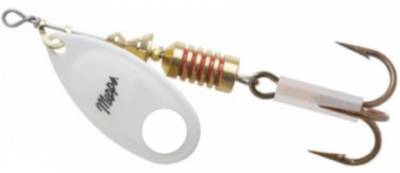As reported
in the previous post, common zander, Stizostedion
lucioperca, ignore sounds of the Ringing Bell System used (or has been used) in
the Mepps Comet spinners.
In this post, we will show that common perch, Perca fluviatilis, ignore sounds of the similar system used in the
Blue Fox Vibrax spinners.
Common
zander, Stizostedion lucioperca, are
not attracted by sounds of the Mepps Ringing Bell System
The
patented Blue Fox Vibrax brass system consists of an internal cogwheel and an
external bullet shaped body. According to catalogs, this system is used in the Blue Fox Vibrax and
other spinners. Blue Fox Co. writes that
sounds produced by the Vibrax System attract fish (in addition to eliminating line
twist).
According
to our field experiments, this marketing course is incorrect.
In these experiments,
ringing and ringless 4 gr Blue Fox Vibrax spinners of silver color were
compared with each other. One half of lures, marked VR, were intact. In the
other half of lures, marked VL, internal cogwheels and external bodies were glued with the waterproof
adhesive.

At each
estimated locality of perch, 20 presentations (cast and retrieving) of lures
were made: 5 with VR, 5 with VL, 5 with VR and 5 with VL. The same 20 lure
presentations were repeated in the other fishing localities, in the reverse order. In total, 43 perch were
landed for the one morning: 19 on VR and 24 on VL lures. To estimate mean
differences for field data, fish were group per each 10 lure (for VR and VL)
presentations. In final, perch, according to Student’s t-test, showed no
preference in favor of ringing (VR) or ringless (VL) Blue Fox Vibrax spinners.
Read the
post given below to understand why perch must ignore sounds of the Blue Fox Vibrax System.
Predatory
fish do not respond to sounds of rattling wobblers
Cast your
attention that audiograms of the Mepps spinners, that are similar to the Blue Fox
spinners, is mainly represented by the powerful rhythmic sounds produced by rotating
blades (click here to hear sounds). These rhythmic sounds, with the frequency
that is equal to the frequency of blade rotation, overpower any other thythmic
and noise sounds of any spinners.
Basic
References
Protasov
V.R. 1965. The bioacoustics of fishes. Moscow,
Science





